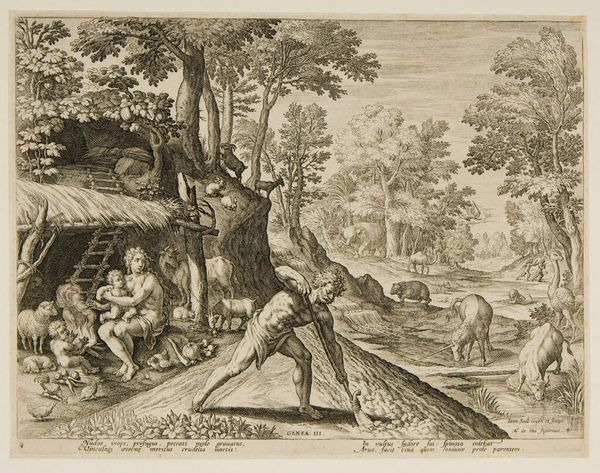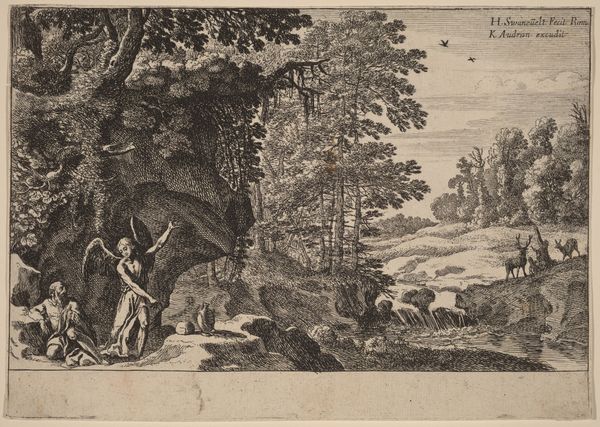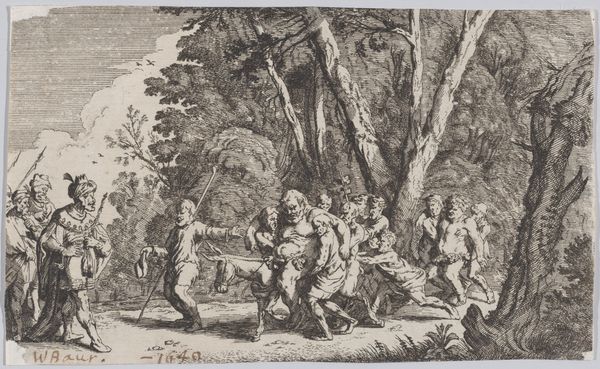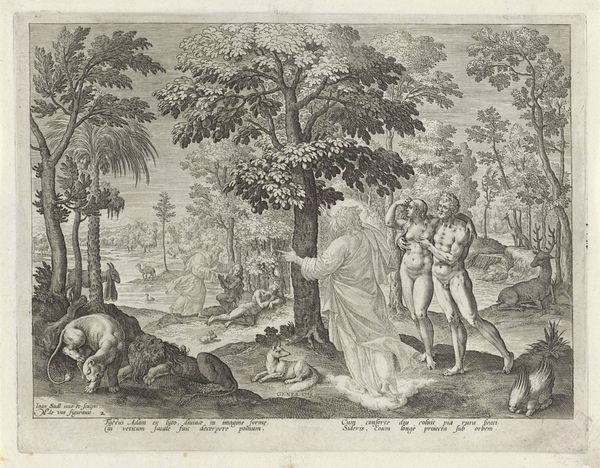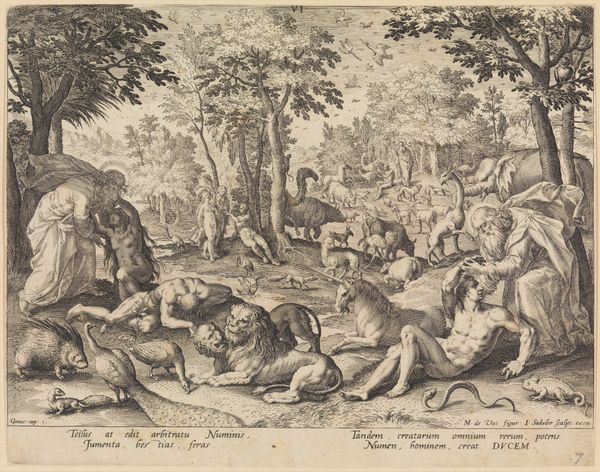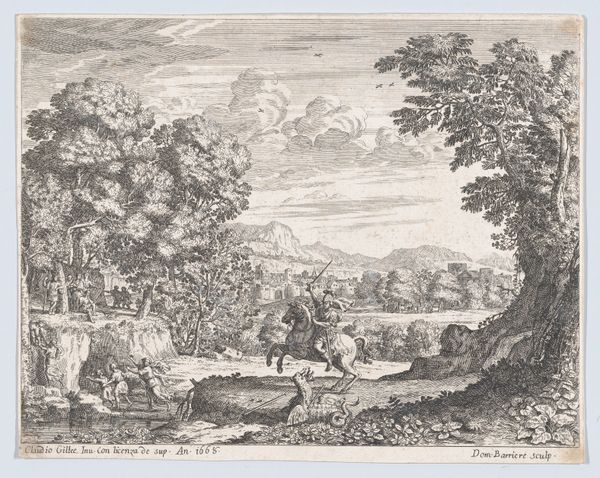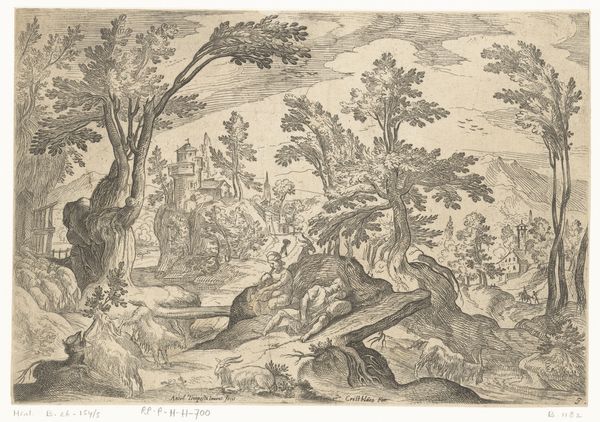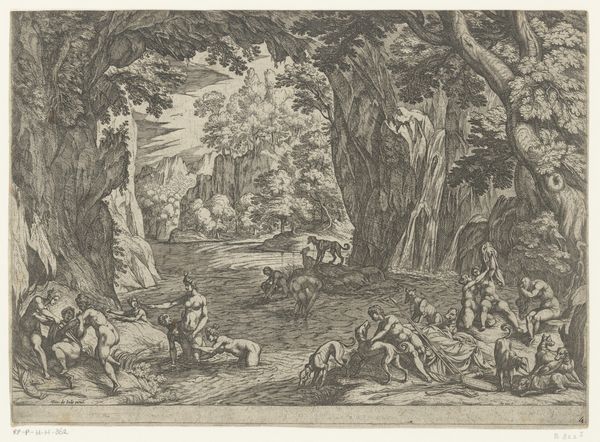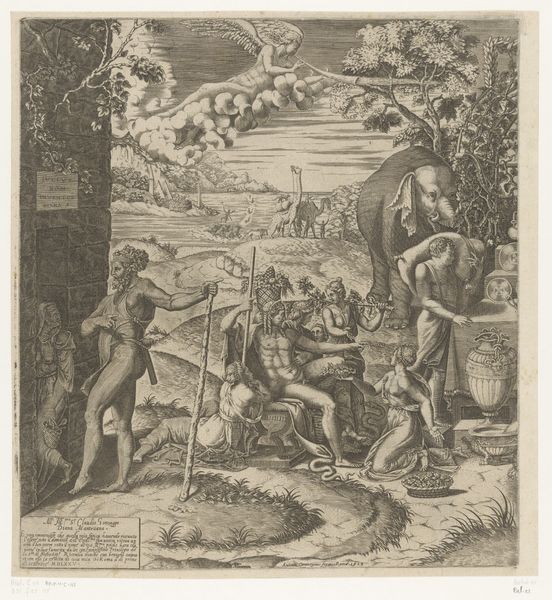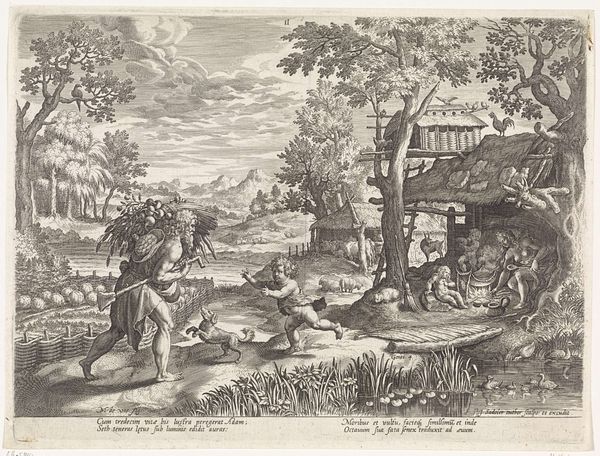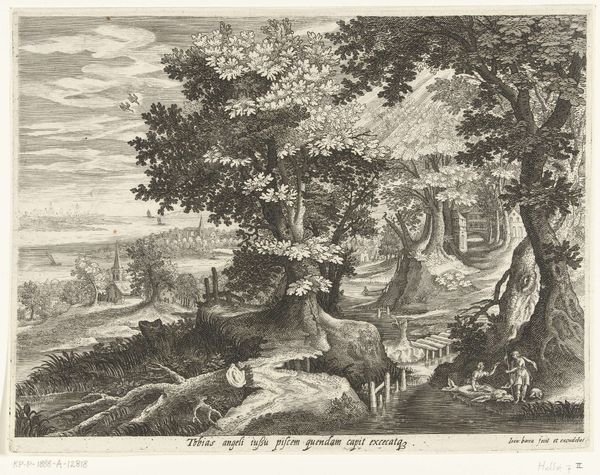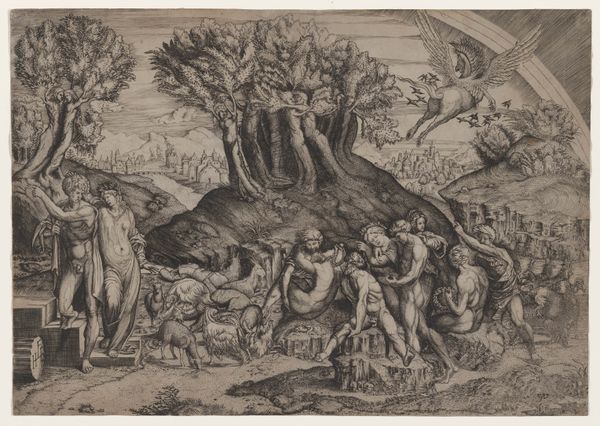
Adam at Work after the Fall from The Story of the First Men 1583
0:00
0:00
drawing, print, ink, engraving
#
drawing
#
ink drawing
#
narrative-art
# print
#
landscape
#
figuration
#
ink
#
genre-painting
#
northern-renaissance
#
engraving
Dimensions: Sheet: 8 1/16 × 10 5/8 in. (20.5 × 27 cm)
Copyright: Public Domain
Curator: This detailed engraving from 1583 is Johann Sadeler I's "Adam at Work after the Fall," part of "The Story of the First Men" series. Notice the intricate linework bringing life to this scene depicting Adam's new reality. Editor: My immediate impression is one of stark contrast. The toil of labor juxtaposed with domestic tenderness creates a palpable sense of loss and adaptation. Curator: Absolutely. Let’s consider the materials: Ink on paper. As a print, this artwork was reproducible, making it accessible to a wider audience, potentially influencing social and moral understanding of the biblical narrative. What about that social impact? Editor: It presents a critical narrative steeped in gendered power dynamics and the exploitation of labor. Adam tills the land—the burden of work assigned post-expulsion. Eve, sheltered in their humble dwelling, embodies domesticity. Look closer: It’s teeming with animals; yet humanity's relationship with nature has fundamentally shifted because they now must exert dominion. Curator: Indeed. The meticulous rendering through engraving—consider the textures of the trees, the muscles on Adam’s back, and the subtle shading that conveys depth. How would you place that craft within art history? Editor: I would analyze its connection to the Northern Renaissance fascination with detailed realism, but I'd push further. Doesn't it reflect a changing world—Europe's transition into an era of mercantilism and colonialism where human labor becomes essential for resource extraction and societal structuring? That physical toil contrasts greatly with Renaissance notions of courtly labor. Curator: Precisely. The distribution through prints would encourage the broader uptake of these evolving value systems attached to labor, influencing perspectives about divine judgment, class, gender, and race within everyday life. Editor: It really provides us insight into the intersections of art, religion, labor, and societal norms within the historical moment, challenging established ideas about innocence, privilege, and human potential. Curator: Yes. "Adam at Work After the Fall" reminds us how an artwork produced centuries ago can ignite timely critical examination. Editor: Illuminating the complex connections of identity and power with an enduring story about loss.
Comments
No comments
Be the first to comment and join the conversation on the ultimate creative platform.
